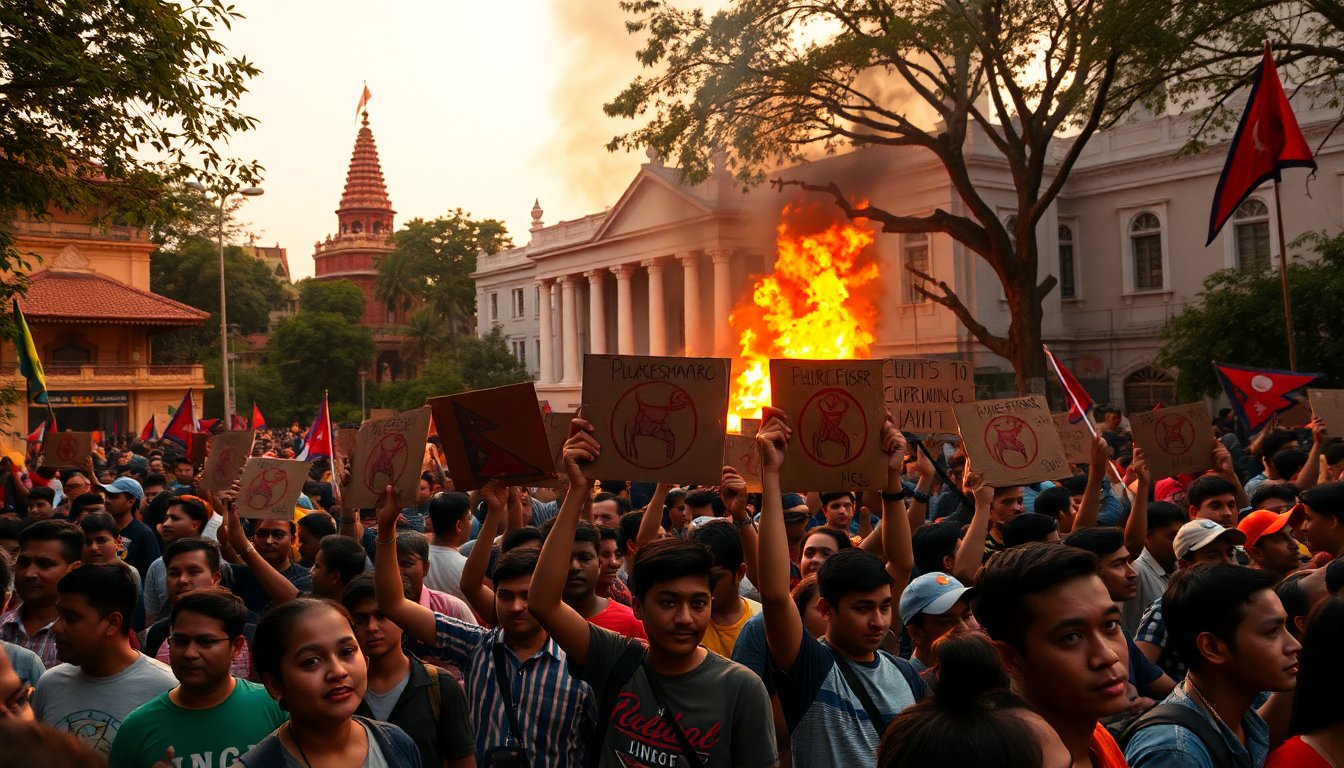Table of Contents
Nepal is currently undergoing significant political upheaval as thousands of young people rally in the capital, Kathmandu. This grassroots movement has escalated into a revolution, resulting in the resignation of the prime minister and the destruction of key government buildings.
The rapid transformation of Nepal’s political landscape, largely driven by youth activism, raises critical questions about the influence of social media in modern protests. Platforms such as TikTok and Discord have been instrumental in organizing these demonstrations, showcasing the potential of young people to leverage technology for social change.
Mobilization through social media
Many participants describe the protests as spontaneous rather than premeditated, reacting to the government’s oppressive actions. Tanuja Pandey, a 25-year-old lawyer and environmental advocate, expressed collective astonishment at the rapid escalation of events. “It wasn’t intended to spark a revolution, yet here we are,” she noted, reflecting on the emotional toll of the movement.
The human cost of dissent
However, the protests have come at a significant cost. Official reports indicate at least 74 fatalities during the demonstrations, including 61 protestors, three police officers, and ten inmates. Additionally, over 2,100 individuals sustained injuries amidst the unrest. While there is a sense of achievement in holding the government accountable, the weight of loss remains heavy for activists like Pandey.
A response to inequality
The catalyst for this unrest was a widely criticized ban on 26 social media platforms, perceived by many as an attack on free speech. Yet, the protests are deeply rooted in longstanding frustrations related to social inequality. The stark contrast between the lives of ordinary Nepalis and the lavish lifestyles of political elites has fueled the demonstrations.
Viral social media campaigns targeting the children of politicians, often labeled as “nepo kids,” have highlighted their extravagant living while many young Nepalis face unemployment and economic struggles. One particularly provocative image featured a provincial minister’s son surrounded by luxury gifts, inciting outrage among citizens.
Engagement on digital platforms
As protests gained momentum, TikTok emerged as an essential tool for mobilization, especially as it remained unaffected by government restrictions. Videos tagged with #nepokids surged across social media, fostering a sense of solidarity among the youth. Following violent clashes, discussions moved to Discord, where students deliberated potential leaders for a transitional government.
After an online vote, Sushila Karki, a former chief justice known for her anti-corruption stance, was selected as the interim prime minister. This shift in leadership was celebrated on social media, with the popular account gen.znepal proclaiming, “Honorable PM Sushila Karki… SLAYYY 💅🏾,” capturing the enthusiasm of a generation eager for change.
Regional implications of youth-led movements
This uprising in Nepal reflects a broader trend across South Asia, where youth movements have successfully challenged established political systems. Nepal is now the third country in the region to experience such upheaval in the past four years, following significant protests in Sri Lanka and Bangladesh. Each instance shares common threads of disillusionment with government corruption and a demand for economic opportunities.
Comparative analysis of protests
In 2022, Sri Lanka experienced months of protests that culminated in the ousting of the Rajapaksa political dynasty, characterized by large demonstrations against economic mismanagement. Similarly, in Bangladesh, students confronted the ruling party, exposing widespread frustration with corruption and governance failures.
The rapid transformation of Nepal’s political landscape, largely driven by youth activism, raises critical questions about the influence of social media in modern protests. Platforms such as TikTok and Discord have been instrumental in organizing these demonstrations, showcasing the potential of young people to leverage technology for social change.0
The road ahead for Nepal
The rapid transformation of Nepal’s political landscape, largely driven by youth activism, raises critical questions about the influence of social media in modern protests. Platforms such as TikTok and Discord have been instrumental in organizing these demonstrations, showcasing the potential of young people to leverage technology for social change.1
The rapid transformation of Nepal’s political landscape, largely driven by youth activism, raises critical questions about the influence of social media in modern protests. Platforms such as TikTok and Discord have been instrumental in organizing these demonstrations, showcasing the potential of young people to leverage technology for social change.2


